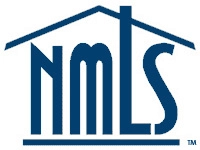Debt Service Coverage Ratio (DSCR) loan
A Debt Service Coverage Ratio (DSCR) loan is a type of financing where the borrower’s ability to service debt is primarily assessed by their DSCR. The DSCR is a financial metric that measures a borrower’s ability to generate enough cash flow to cover their debt obligations. It’s calculated as:

- Net Operating Income (NOI): This is the income generated from the property after deducting all operating expenses but before deducting any debt service.
- Total Debt Service: This includes all the required debt payments, such as interest, principal, lease payments, and sinking funds, over a specified period.
A Debt Service Coverage Ratio (DSCR) loan is a type of financing where the borrower’s ability to service debt is primarily assessed by their DSCR. The DSCR is a financial metric that measures a borrower’s ability to generate enough cash flow to cover their debt obligations. It’s calculated as:
DSCR=Net Operating Income (NOI)Total Debt Service\text{DSCR} = \frac{\text{Net Operating Income (NOI)}}{\text{Total Debt Service}}DSCR=Total Debt ServiceNet Operating Income (NOI)
- Net Operating Income (NOI): This is the income generated from the property after deducting all operating expenses but before deducting any debt service.
- Total Debt Service: This includes all the required debt payments, such as interest, principal, lease payments, and sinking funds, over a specified period.
A DSCR of 1 means that the entity generates just enough income to cover its debt payments. A DSCR above 1 indicates that the entity generates more income than needed to cover debt payments, providing a cushion for the lender. Conversely, a DSCR below 1 means that the entity does not generate enough income to cover its debt payments, indicating a higher risk for the lender.
Key Points about DSCR Loans:
Underwriting Focus: Lenders focus heavily on the DSCR when underwriting these loans. A higher DSCR indicates lower risk and may result in more favorable loan terms.
Common in Real Estate: DSCR loans are common in real estate financing, particularly for income-producing properties like commercial buildings, multi-family housing, and rental properties.
Loan Terms: The required DSCR varies by lender and loan type. For commercial real estate, a DSCR of 1.25 to 1.5 is often required, meaning the property must generate 25% to 50% more income than the debt service requirements.
Cash Flow Focus: Because DSCR loans emphasize cash flow, they can be advantageous for borrowers who might not have substantial collateral but can demonstrate strong income generation.
Risk Management: Lenders use DSCR to manage risk, ensuring that the borrower has a buffer to absorb income fluctuations and maintain debt payments.
In summary, a DSCR loan is designed to assess and mitigate risk by focusing on the borrower’s ability to generate sufficient income to meet their debt obligations.
Our Free Purchase Assistant is designed to help narrow down your loan options based on your individual needs. It’s quick & it’s easy. The more questions you answer = the more accurate your results. https://www.nsmn.com/purchase-assistant/














